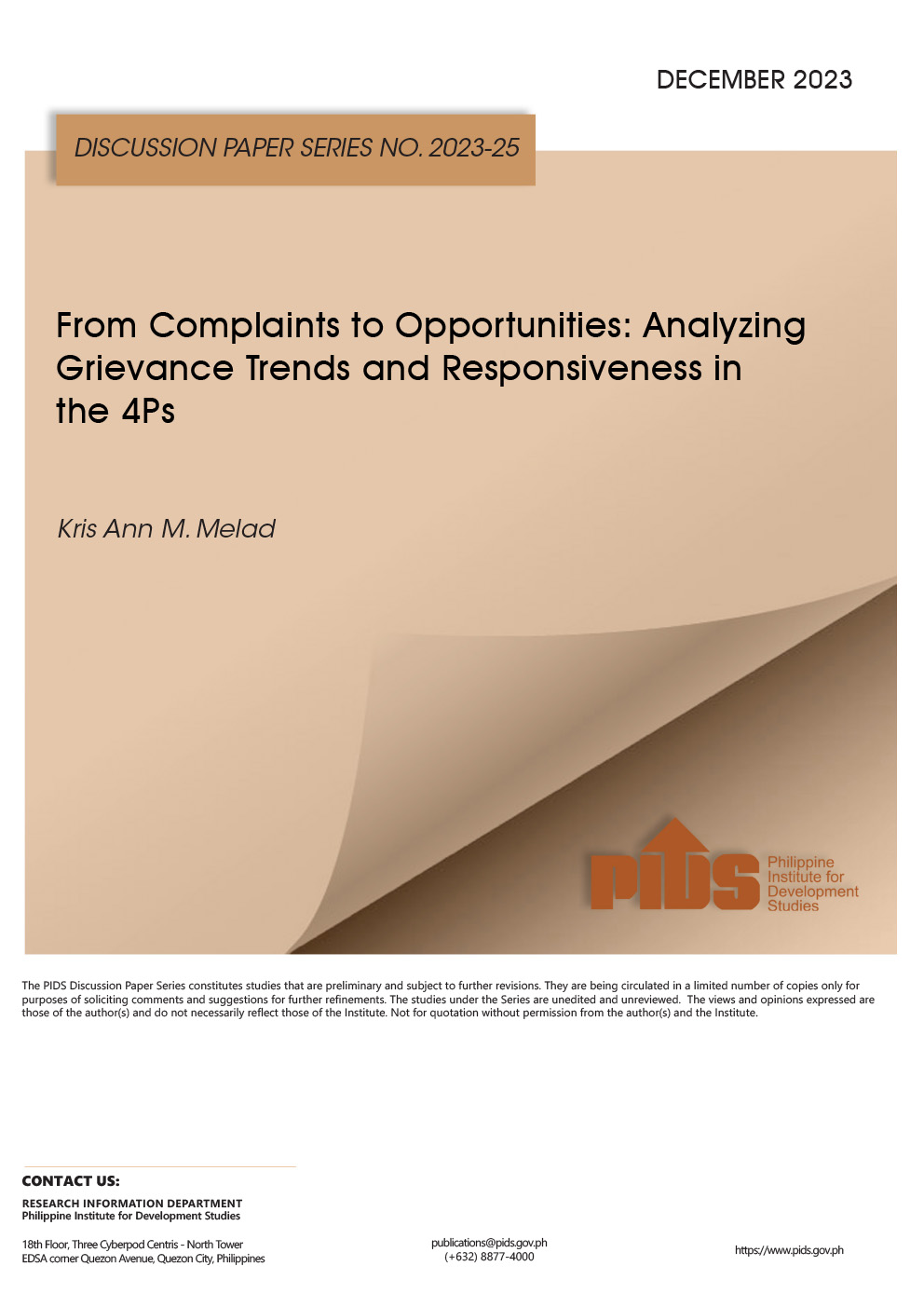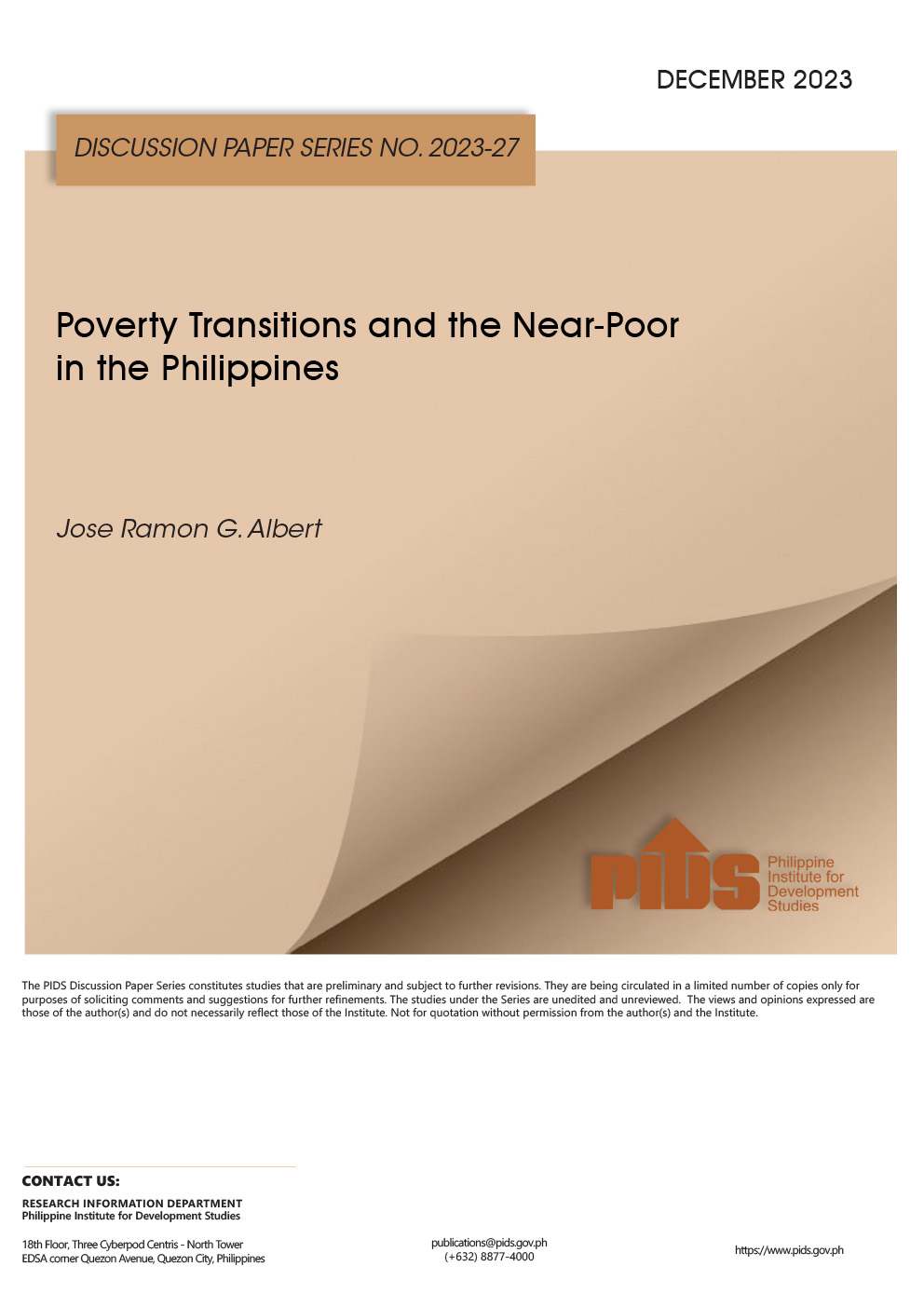KNOWN for celebrating the longest Christmas season in the world, the Philippines will also see this year’s holiday on a short budget.
Instead of the usual fare of hamon, quezo de bola, salad, leche flan and other Christmas favorites, some Filipino families may likely swap these for roasted chicken, a simple noodle dish, rice and a no-frills dessert from more affordable ingredients.
Nonetheless, it is still a Noche Buena (Christmas eve meal) that Filipinos would still enjoy, economists like Philippine Institute for Development Studies (PIDS) Senior Research Fellow Roehlano Briones told the BusinessMirror.
“The spread will be simpler and good for just one family. People will still save up to buy hamon and quezo de bola [ham and cheese ball],” Briones said.
Briones’s view reflects the falling consumption pattern that has marked the economy since lockdowns were imposed in mid-March to contain the Covid-19 pandemic.
Monetary Board member and economist V. Bruce J. Tolentino pointed to the latest Social Weather Station (SWS) indicator on hunger as one direct evidence of falling consumption.
Better-off Pinoys
THE SWS July report noted that one out of five Filipinos, or about 5.2 million families, experienced involuntary hunger (hunger due to lack of food to eat) at least once in the past 3 months.
The report pointed out this was the sum of 15.8 percent or about 3.9 million families who suffered moderate hunger and the 5.1 percent or about 1.3 million families who experienced severe hunger.
The SWS defines moderate hunger as experiencing hunger “only once” or “a few times” while severe hunger refers to those who experienced it “often” or “always” in the last three months.
“There has been a spike in people experiencing hunger—both moderately and severely. This pattern will likely continue as the pandemic prevails and many enterprises are closed or slowed down and many lose their jobs,” Tolentino told the BusinessMirror.
“Economic science predicts that when people’s incomes fall, their total food consumption bill will fall, and that total will also be reallocated to more basic staples—more rice, corn, root crops, and lower priced meats and greens,” Tolentino added.
The recently appointed MB member noted that there would be a “negligible” effect in consumption quantity and quality among better-off Filipinos while consumption adjustments would be largely observed among the less fortunate.
More spending
BASED on the 2018 Family Income and Expenditure Survey (FIES), Filipino families spent P5.91 trillion in 2018 to cover all their food and non-food expenses. About 42.6 percent of this was spent on food and 33.6 percent was spent on food consumed at home.
In terms of food consumed at home, the highest expense was on bread and cereals at 11 percent. This covered spending for rice, the country’s food staple.
However, there are differences when the pie is divided according to income classes. Those who have less in life tend to spend more on food compared to those in the upper crust of society.
Data showed a family earning less than P40,000 a year spent P4.37 billion on various food and non-food expenses. In contrast, the richest families or those earning P500,000 and over annually spent P2.08 trillion in 2018.
Families earning P40,000 to P59,999 per year spent P22.23 billion while those earning P60,000 to P99,999 annually spent P163.35 billion on various food and non-food expenses.
Upper-income-class households or those earning P100,000 to P249,999 and P250,000 to P499,999 a year spent P1.68 trillion and P1.96 trillion, respectively in 2018.
Of all income classes, those earning less than P40,000 a year spent the most on food expenses, which accounts for 58.3 percent of their annual expenses. This means their food expenses reached P2.76 billion in 2018.
Not at home
DATA showed that only families earning P250,000 to P499,999 a year and those earning P500,000 and over annually spent less than 50 percent of their total expenses on food at 44.1 percent and 31.4 percent, respectively.
In terms of food consumed at home, those earning P60,000 to P99,999 a year and P40,000 to P59,999 annually spent the most at 52.9 percent and 52.2 percent, respectively. With this, they are also the ones who spent the least on food consumed outside the home at 5.4 percent and 6.6 percent, respectively.
It may be noted that those earning P250,000 to P499,999 per year spent the most on food consumed outside the home at 10.1 percent of their expenses.
Further, households earning the least at less than P40,000 a year and those who earned P100,000 to P249,999 annually, allocated almost the same share of their expenses at 8.1 percent and 8.2 percent, respectively, on food consumed outside the home.
The richest, or those earning over P500,000 a month, tend to spend a similar percentage at 8.8 percent of their total expenses, on food consumed outside the home.
Nonetheless, data showed that food, especially food consumed at home, accounted for the largest share of Filipino families’ expenses in 2018.
Elasticities, handling
NATIONAL Economic and Development Authority Undersecretary Rosemarie G. Edillon told the BusinessMirror that the consumption of food and non-alcoholic beverages in the second quarter of the year grew only by 2.4 percent, slower than the first-quarter growth of 4.7 percent and the 2019 second-quarter growth of 5.5 percent.
The deep contraction at -66.4 percent, Edillon said, was experienced by the restaurant and hotel sector. The rate came from a contraction of -14.3 percent in the first quarter.
“We do not have information on which food items became less in demand, but based on known income elasticities and handling issues, we have some ideas,” Edillon said.
She added that the consumption of meat products, fish, some fruits and vegetables—which were expensive before the pandemic—are likely to fall as these are income-elastic foods.
Edillon explained that the closure of tourism establishments and restaurants as well as the decline in incomes will also contribute to the drop in the consumption of these food items.
“There is also the problem of supply chain disruptions; although the IATF [Inter-Agency Task Force on Emerging Infectious Diseases] has made sure that delivery of food and other essential goods should not be hampered, there are still regulations that need to be complied, which adds to the cost of delivery,” Edillon said.
Wary to eat out
IN a recent presentation, Ateneo Center for Economic Research and Development (ACERD) Director Alvin P. Ang said Filipinos’ food and non-alcoholic beverage consumption increased to 38 percent of total household consumption in the first semester of 2020 from 34 percent in the same time last year.
Further, Filipinos’ consumption of food from restaurants and use of hotel facilities also shrank to 6 percent in January to June 2020 from 9 percent in the same period last year.
The increase in food consumption was understandable given the relatively cheap food commodities.
Inflation slowed to 2.4 percent in August from 2.7 percent in July this year. The Philippine Statistics Authority (PSA) reported that this led inflation to average 2.5 percent in the January to August period.
However, the increase in food prices was even lower than the average inflation rate at only 1.7 percent in August. While this was still higher than the 0.3 percent recorded in August 2019, this was a significant slowdown from the 2.5 percent posted in July 2020.
The PSA data showed that the 1.7-percent inflation for food in August was the lowest posted this year. It was the lowest since December 2019.
Supply chains
BY specific food item, the PSA said the indices for rice and corn contracted 1.1 percent and 0.6 percent, respectively. Similarly, the index for vegetables declined 0.9 percent during the month, from a 0.9 percent annual increase in the previous month.
The low inflation, Ang said, was also due to the availability of food in the market. Despite the lockdowns, the government, through the Department of Agriculture (DA), facilitated the movement of various commodities.
Filipinos also had access to rice, and at least one source of protein, chicken, which remained in abundant supply. “[The] DA is on track ensuring availability and connection of supply chains,” he noted.
“In terms of GDP [gross domestic product] growth, it is due to the growth of information, communication technology (ICT), utilities and a little [was due to] food,” Ang told the BusinessMirror. “[For some households], the only thing they can spend on at this time is food.”
However, amid the weak demand, Foundation for Economic Freedom (FEF) President Calixto V. Chikiamco said the pandemic has led more Filipinos to order food online and made them more health- conscious, such as purchasing foods rich in Vitamin C to fight the pandemic.
Pandemic continues
CHIKIAMCO said Filipinos also learned to make purchases in bulk to reduce the number of times they need to go to the grocery. He added that Filipinos also consumed a lot of familiar food items that are considered “comfort food.”
Moving forward, food consumption will increase especially when it comes to the essentials or food staples like rice, in Ang’s view. Consumption of “fancy food” may take a backseat given the ongoing crisis, he noted.
In an email to BusinessMirror, University of Asia and the Pacific Center for Food and Agri Business Executive Director Rolando T. Dy said the elasticity of demand will definitely set in.
Items considered to have inelastic demand are those that do not have substitutes while commodities that have elastic demand are those with substitutes and could even pass for luxuries.
Overall, Chikiamco said consumption will remain muted as long as mobility restrictions are in place and the spread of the pandemic continues. These limit employment options and generally leave Filipinos without any confidence to spend.
“For sure, consumption will be curtailed, not only because of the limitations in crowd gatherings and restaurant occupancy but because disposable incomes have been eroded with the increased unemployment,” Chikiamco said. “Also, the fear of the pandemic will continue to hamper consumption.”
Agriculture weak
BRIONES added that while food consumption during the lockdown somehow helped buoy GDP, the agriculture sector does not have enough strength to lead the economy in a high growth path.
In the least, Briones said food consumption, which kept the agriculture sector afloat, helped prevent the economy from suffering a deeper contraction than it had.
Nonetheless, Briones said the potential is there. Food consumption can still help boost growth, especially if consumers buy from local food sources and reduce their consumption of food items that were either imported or had high import content.
Ang agreed, noting that a lot of imported foods are available in the Philippines. This is especially common among online food businesses.
“Consumers may wish to patronize local food—reduced processed meat which has imported ingredients—fresh pork and chicken, fresh fish, and avoid imports to boost local employment,” Briones said.
Production, peso
THE government, Briones said, can also play an important role in facilitating the distribution of food by encouraging online sales and creating mobile markets.
Dy said if there will be more food consumption, this will help GDP grow. He estimated that currently, food consumption accounts for about 30 percent of GDP.
Dy said higher food demand will affect local crops, poultry, pork, meat and fish, especially if these are processed or have value-added. He added that having local value added in these commodities will help create jobs and lead to higher incomes and, ultimately, faster GDP growth.
However, Chikiamco said the Philippines does not produce enough food. Much of the country’s food requirements are still being imported such as rice, he noted.
“We don’t produce enough. We import a big portion of our food requirements, including rice,” Chikiamco said. “What may affect food production is the strong peso, which makes it cheaper to import food. Imported chicken, for example, are flooding the local market.
Extreme volatilities
BROILER raisers who suffered most parts of this year from low farm-gate prices due to glut and lack of demand are thinking less of Christmas.
It was a year like no other for broiler raisers—even worse than 2017, when farm-gate prices plunged due to adverse impact of bird flu outbreaks on Filipinos’ consumer behavior, industry players said.
For most months of the year farm-gate prices for broilers were below production cost: P70 per kilogram (kg) to P75 per kg; even plunging to as low as P35 per kg.
The decline in farm-gate prices was caused by higher production coupled by the loss of the hospital, restaurant and industrial (HRI) sector market in the lockdowns. As this accounted for 30 percent of total industry demand, its absence resulted in a glut.
The current market situation has caused extreme volatilities in the price movements of broilers, with times reaching a peak of P85 per kg and then suddenly dropping below P70 per kg the following week.
Running out of money
AS of mid-September, the average farm-gate price of regular-sized broilers fell slightly to P74.5 per kg from the previous week’s P76 per kg, based on latest United Broiler Raisers Association (Ubra) data.
Worse, consumers in urban areas like Metro Manila did not even benefit from the downward price movements at the farm-gate level. The retail price of dressed chicken remained elevated at a range of P140 per kg to P160 per kg in the past months.
“We think demand is getting even weaker. It seems people are running out of money,” Ubra Chairman Gregorio San Diego told the BusinessMirror.
“The producers tried to increase the prices since retail prices remained high but low demand made the farm-gate price retreat,” he added.
However, San Diego said the industry is bracing for a steeper decline in the following days as they do not see demand picking up; worsened by the influx of imported chicken.
“Talks in the broiler sector are that there’s no Christmas this year in terms of level of consumption,” he added.
Over-importation
THE country’s broiler output this year is estimated to grow slightly to 1.441 billion heads from last year’s 1.431 billion heads, but Ubra is pessimistic that the figure would be achieved. Ubra said some broiler raisers have even reduced their production by 30 percent to 40 percent due to current market conditions.
“It’s possible that it will be lower considering the fact that even integrators have already reduced their production volume,” San Diego said. “If chicken meat importation continues to increase, local production may reduce some more.”
A Global Agricultural Information Network (Gain) report has revised downward its projection for the country’s chicken meat production this year from a 3.44-percent expansion to 15-percent contraction due to lack of demand.
“The 6-month lockdown in the Philippines has heavily affected the hotel, restaurant and institutional industry, where it is estimated that one third of all chicken is consumed,” read the report, prepared by the US Department of Agriculture’s Foreign Agricultural Service in Manila.
Job losses and work closures have also contributed to lower consumer spending, particularly for food consumed outside the home, according to the report.
“Broiler integrators have reportedly cut down or delayed their production cycles to reflect this weak poultry demand,” it added.
Food sufficiency
SEEKING to improve food sufficiency by boosting local production to mitigate impacts of international trade disruptions, the government has been aggressive in its “Plant, Plant, Plant” program.
Industry groups like the Philippine Chamber for Agriculture and Food Inc. (PCAFI) said, however, the program should be complemented with a “Buy, Buy, Buy” program to boost Filipinos’ demand for food products to ensure a market for planters’ produce.
“Christmas demand this year is far from the Christmas demand that we know,” PCAFI President Danilo V. Fausto told the BusinessMirror.
“What is needed are programs that will stimulate—to help create—demand. There is no problem with production and supply, our problem is demand as people lost jobs, businesses closed,” Fausto added.
Citing latest government data, Fausto noted 4.6 million unemployed Filipinos today—possibly spelling 4.6 million households with lower food consumption.
Farm-gate prices of live hogs peaked at P170 per kg, but have gone down in recent months to P150 per kg due to lack of demand—considering the fact the local production is down as well.
Tweaking demand
FAUSTO has been vocal about government’s stimulus fund, even that of the DA. He has said the stimulus should focus on creating more demand for food products as the country transitions toward the new normal.
Fausto points out that this year is all about survival and stimulating demand to keep the economy running since consumption plays a big part in the country’s economic growth.
He proposes the government continue providing cash subsidies to people who lost their jobs and financial support to businesses, particularly the small and medium enterprises.
Imagine a Christmas without puto bumbong (purple rice cake) after dawn masses: that is how Fausto pictures this year’s yuletide season.
“Filipinos may just make their own hams this Christmas. If they are used to a whole lechon (roast pig), they will just buy two kilograms this year for Noche Buena,” he said.
“The Christmas spirit always will be there but the level of consumption will not be the same. And since Simbang Gabi is now online, there’s no puto bumbong anymore,” Fausto added.
Hams anew
IN fact, hams may indeed get pricey this Christmas—again. And if families want an alternative? Luncheon meat. Or perhaps, hotdogs.
The damage caused by the African Swine Fever (ASF) to local hog production has been felt this year, causing farm-gate prices of hogs to rise to unprecedented levels resulting in higher retail prices of pork.
Pork prices have hovered above P230 per kg since the Covid-19 pandemic started, forcing consumers to find cheaper alternatives such as eggs.
More so, the tight global pork supply caused by the damage to China’s pork herd due to ASF, have made imports pricier than ever.
Philippine pork imports from January to August fell by 40 percent, the steepest on record.
Against this backdrop, Trade Undersecretary Ruth B. Castelo told the BusinessMirror prices of Noche Buena products, particularly hams, will likely go up this year.
Eyeing hotdogs
LAST year, buyers had to pay nearly P57 more to bring home a kilo of ham last year, as the average price of a 1 kilo shot up 11.35 percent to P558, from P501.08 in 2018, based on the suggested retail price (SRP) list of the Department of Trade and Industry.
They also had to spend an additional P5.5 for an 800-gram variant and P8.17 for the 150-gram option.
If there is a meat product with a bright future this Christmas, it could be hotdogs.
Frabelle Corp. sees demand for hot dogs to increase in the days leading up to Christmas eve, as the meat product’s versatility—it can be eaten on its own, can be topped on spaghetti, can be fused in tomato-based dishes—bring value to a buyer’s money. Industry estimates that hotdog penetration in households is 80 percent, meaning 8 in 10 Filipino families consume hot dogs.
Yuletide sales
PHILIPPINE Amalgamated Supermarkets Association Inc. President Steven T. Cua told the BusinessMirror that the government has to step in to force people to buy during the holidays.
Without intervention, families will keep their cash in their pockets and spend only for basic needs, Cua added.
“Technically speaking, it looks like we’re headed for bleak Christmas sales,” he said.
“This may be helped if the government is able to schedule another round of social amelioration program or a form of soft loan nearing Christmas Day to inject some life into our consumer-led economy,” he added.
For Tolentino, the government should now focus its efforts on improving the competitiveness of other food commodities like vegetables and meats that contribute to the food price inflation.
According to Tolentino, the Philippines “really needs to support agriculture, because it assures food security and jobs.”
He said, “Consumers spend less of their lower incomes on food, and labor wages are made more adequate because food costs are lower…With lower wage bills, the economy can provide more jobs. Thus, the payoff from greater agriculture productivity and lower food prices is immense.”
Extra efforts
NO less than Agriculture Secretary William D. Dar said that low consumer food demand would “greatly affect food production and farmers.”
Dar explained that if food supply in the market exceeds current consumers’ demand then it will cause prices of specific commodities to fall, which may force farmers to shift in producing to other crops or opt to stop farming at all.
“This is the reason we are strictly implementing our programs to ensure that performance of agriculture will not be disrupted by any changes in consumption patterns, and the whole food systems in the country,” Dar told the BusinessMirror
Dar said they are now exerting extra efforts in empowering food producers to enhance their productivity and profitability to ensure sufficient supply of basic food commodities.
Noting that increased food consumption would contribute to higher GDP, Dar said the Department of Agriculture (DA) is “working hard” to ensure that “nutritious and affordable food reaches” Filipino consumers. (Read here about the DA’s stimulus fund: https://businessmirror.com.ph/2020/09/17/p8-8-billion-of-da-stimulus-fund-to-go-to-income-enhancement-projects/).
“We can assure that we will have enough food on our table during Noche Buena and even until the first quarter of 2021. Additionally, the Covid19 pandemic has significantly increased Filipino consumers’ preference on healthy food,” he said.
Affordable commodities
“THEREFORE, we can expect that most Filipino households will have a healthy and affordable food to feast on this coming holiday,” he added.
Dar pointed out that the agriculture sector grew by 1.6 percent in the second quarter despite the pandemic’s impact, indicating the relative strength and resiliency of the sector.
“Also, as long as accessible and affordable commodities can supply and reach the increasing demand for food, the agriculture sector can help boost our GDP growth,” he said.
“With these efforts, we are hoping that we can achieve the 2 percent growth target, especially with sufficient funds and investments,” he added.
Dar said part of the programs being implemented by the DA under the new normal include improving production-to-consumption value chain while empowering the marginalized sector and supporting diverse distribution efforts with good logistics.
The DA is also harmonizing the food systems with other related sectors, such as energy, water, manufacturing, to build resilience, he added.
Dar said DA is also keen on addressing hunger and all forms of malnutrition, such as obesity and micronutrient deficiencies, through production and consumption of nutritious foods.
Reopening the economy
ULTIMATELY, Edillon said the key to increasing food production and boosting GDP growth is to open the economy in the “safest possible way.”
These efforts should be complemented by the smooth functioning of checkpoints and continued implementation of food resiliency protocols.
“There is a need to effectively manage the supply and distribution of food commodities to ensure enough buffer stock, prevent wastage and spoilage, and minimize the losses of farmers. Food production in both rural and urban areas needs to be promoted,” Edillon said.
Other efforts include the “Plant, Plant, Plant” program, which provides starter kits for urban agriculture and eases access to nutritious food even in a lockdown.
Local government units, Edillon said, can also encourage the use of idle lands for community gardening. They can purchase directly from farmers’ groups for use in relief distribution or engage them to sell their produce in mobile markets.
Further, Edillon said the government must invest in cold storage facilities; and innovations in food packaging and processing, which prolong the shelf-life of food, need to be increased.
She added that delivery services need to be made more efficient through the use of digital marketing platforms.
Cut consumption could ‘cancel’ Christmas







